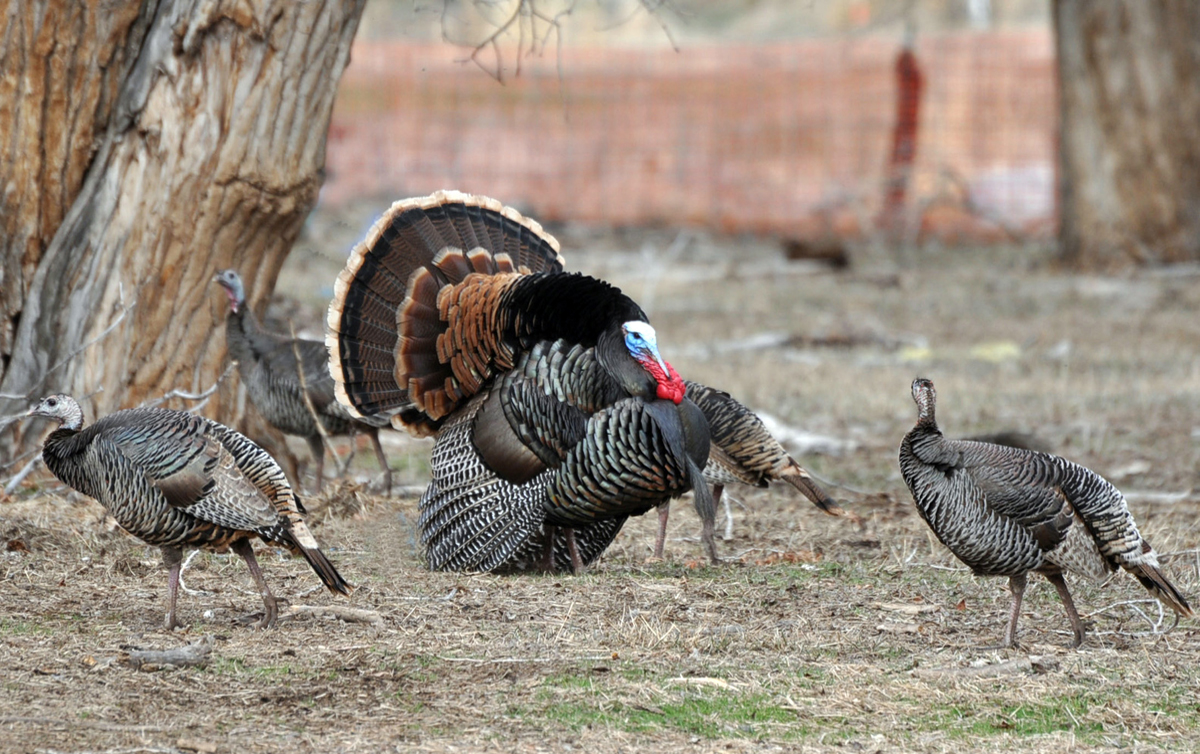
Utah has a thriving population of wild turkeys
By Mark Hadley
Many Utahns aren’t aware that Utah has a thriving population of wild turkeys. Late November is a perfect time to get outside and see them.
Today, Utah’s turkey population numbers almost 25,000 wild birds. But that wasn’t always the case. In fact, until the 1950s, established turkey populations hadn’t been seen in Utah in 100 years or more.
“Based on historical and archeological evidence, it’s clear Native Americans and turkeys coexisted in Utah,” said Jason Robinson, upland game coordinator for the Division of Wildlife Resources. “That evidence includes pictographs, petroglyphs, blankets made from turkey feathers, and turkey bones found at places Native Americans lived.”
Except for a failed reintroduction in the 1920s, no records exist of turkeys being in Utah from the time Europeans started exploring the state to the successful reintroduction of birds in the 1950s.
In the 1950s, biologists with the Utah Department of Fish and Game (the agency’s name was changed to the Division of Wildlife Resources in 1967) successfully released Merriam’s wild turkeys in southern Utah. Subsequent releases of both the Merriam’s and Rio Grande subspecies happened through the years. Wild turkey populations in Utah really took off, though, starting in 1989.
“As the years went by, houses and roads started eating up pheasant habitat in parts of the state,” Robinson said. “As a result, pheasant populations in those areas declined. We wanted to give the state’s upland game hunters another opportunity, and wild turkeys fit the bill perfectly. Under the leadership of former DWR Upland Game Coordinator Dean Mitchell, turkey reintroductions increased, and the state’s turkey population took off.”
At first, biologists brought birds in from other states, with South Dakota providing most of the birds Utah received. Now, turkeys in Utah are doing so well that biologists can simply move birds within the state, either to start new populations or supplement populations that have room for more birds.
Viewing turkeys
The Thanksgiving holiday weekend is a great time to get outside and see wild turkeys in Utah.
As winter approaches, Robinson says turkeys move out of the high country and congregate in areas at lower elevations. Agricultural fields are one of the best places to see them this time of the year. Areas near rivers and streams, near the high-country areas the birds live in during the warmer months, are also great places to look.
“Slopes of hills and mountains that face south can also draw groups of birds,” Robinson said.
Turkeys usually stay in these lower elevation areas, and on south-facing slopes, until March. Then, as the snow melts and the temperature climbs, the birds travel to higher elevations to breed and nest.
While April can be a difficult month to find turkeys, it’s also the most exciting time to watch them.
“April is when the birds’ breeding season begins,” Robinson said. “The males are in their bright, colorful breeding plumage. Watching them strut and gobble as they try to draw the attention of female turkeys is one of the most interesting and exhilarating things you’ll see in nature.”
To find turkeys in April, you’ll have to travel to higher elevations.
“Once you arrive in a higher elevation area, look for three things: large cottonwood or Ponderosa pine trees the birds can roost in, thick brush the birds can feed and hide in, and water,” Robinson said. “Sometimes, you’ll even see them as you’re driving along a road. It’s just a matter of being in the right place at the right time.”
A general idea of where turkeys live in Utah is available in the 2018–19 Utah Upland Game and Turkey Guidebook. You can get the free guidebook at wildlife.utah.gov/guidebooks.
“A map that shows where turkeys live in Utah is available on page 35,” Robinson said. “The dark splotches on the map indicate the general areas where turkeys are found in the state.”
If you have questions about viewing or hunting turkeys in Utah, call the nearest Division of Wildlife Resources office or the DWR’s Salt Lake City office at (801) 538-4700.
Articles related to “Utah has a thriving population of wild turkeys”
How to prevent wildlife attacks: Let common sense overrule curiosity
Wildlife and roads don’t mix: Be aware of animals on the move



